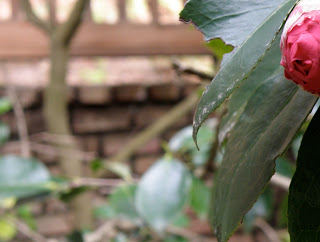“I lingered at the gates; I lingered on the lawn; I paced backwards and forwards on the pavement; the shutters of the glass door were closed; I could not see into the interior; and both my eyes and spirit seemed drawn from the gloomy house – from the gray hollow filled with rayless cells, as it appeared to me –to that sky expanded before me – a blue sea absolved from taint of cloud; the moon ascending it in solemn march …. Little things recall us to earth: the clock struck in the hall; that sufficed. I turned from the moon and stars, opened a side-door, and went in.” Chapter xii, Jane Eyre, by Charlotte Bronte
Rosey, Sarah and I went to see the film Jane Eyre a few days ago. I thought it a very fine adaptation, though perhaps unnecessarily frightening – or slow-going! – in spots. I thought perhaps I should re-read the novel, remembering that I had thought it astonishing, wonderful, seen myself in its heroine, back in 1983. I began the novel, coming back to it twice to re-engage, and was surprised at the intensity of my response this time around. “No,” ran my feelings this time. “No.” I couldn't continue to read this world ... it felt claustrophobic to me. The passage above more than exemplifies the world of Jane’s thoughts and her physical limits. She is always pacing. She is only occasionally able to be distracted … here, by the beauty of the moon … which is in a sky that is -- she cannot help but observe -- “absolved from taint of cloud.” What kind of talk is this? Our heroine is utterly un-able to observe a clear blue sky. However far her artistic observations may wander, Jane is always brought back to her tiny prison-cell of a world by something very like the ticking of a clock. She cannot stay in the world of the moon, even if, as one can hope, her creator could. I am sure that Bronte intended to provoke reactions like mine... but I just cannot read her any further.
There is a very slim volume by Iris Murdoch, called The Sovereignty of Good. Murdoch taught philosophy at Oxford (in addition to writing several well-received novels) and this book is about seeing, and then experiencing, “good.” She writes that “we are anxiety-ridden animals. Our minds are continually active, fabricating an anxious, usually self-preoccupied, often falsifying veil which partially conceals the world.” [Example before us? Jane Eyre]. Murdoch says that what is needed is a change of consciousness. She says that, following Plato’s Phaedrus, she wishes to discuss what she calls “an occasion for unselfing,” and she means that we can change how we perceive our world when we encounter… beauty. [Yes, beauty!!]. She gives an example, so that we may better understand this concept of change as she wants us to see it: “I am looking out of my window in an anxious and resentful state of mind, oblivious of my surroundings, brooding perhaps on some damage done to my prestige [Jane Eyre lingers]. Then suddenly I observe a hovering kestrel. In a moment everything is altered. The brooding self with its hurt vanity has disappeared. There is nothing now but kestrel. And when I return to thinking of the other matter it seems less important. And of course this is something which we may also do deliberately: give attention to nature in order to clear our minds of selfish care.” But she says we may not be able to try to “enjoy” nature … that may seem too "forced." Rather, following the Romantic poets, “we take a self-forgetful pleasure in the sheer alien pointless independent existence of animals, birds, stones and trees. “ ’Not how the world is, but that it is, is the mystical.’ ” (pp. 82-3, my copy, from Routledge Classics, 2001).
Jane Eyre does not move in these circles… She looks so far inward, and remains there. Jane Austen [I throw this in] writes characters who can move… I can still read her... Austen and her women see the kestrels all the time.

















































